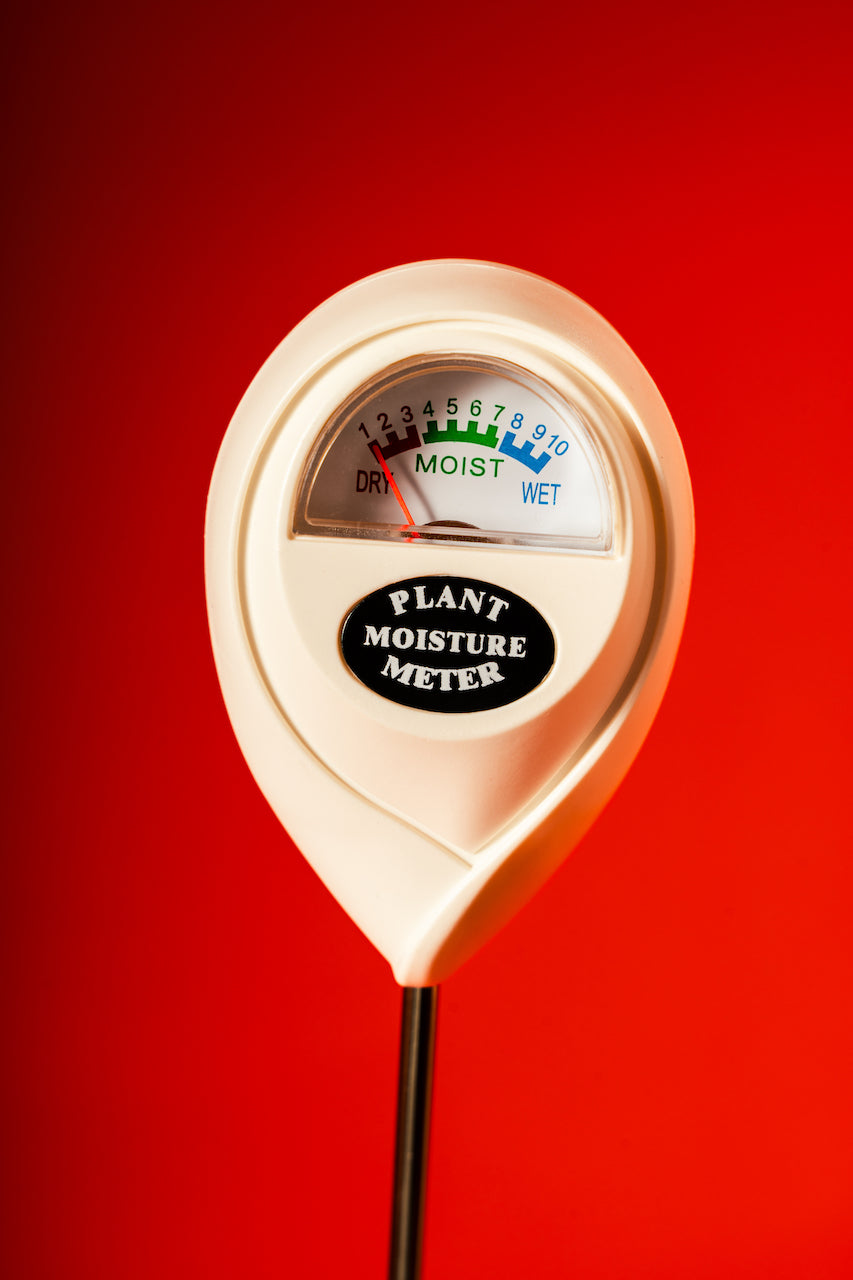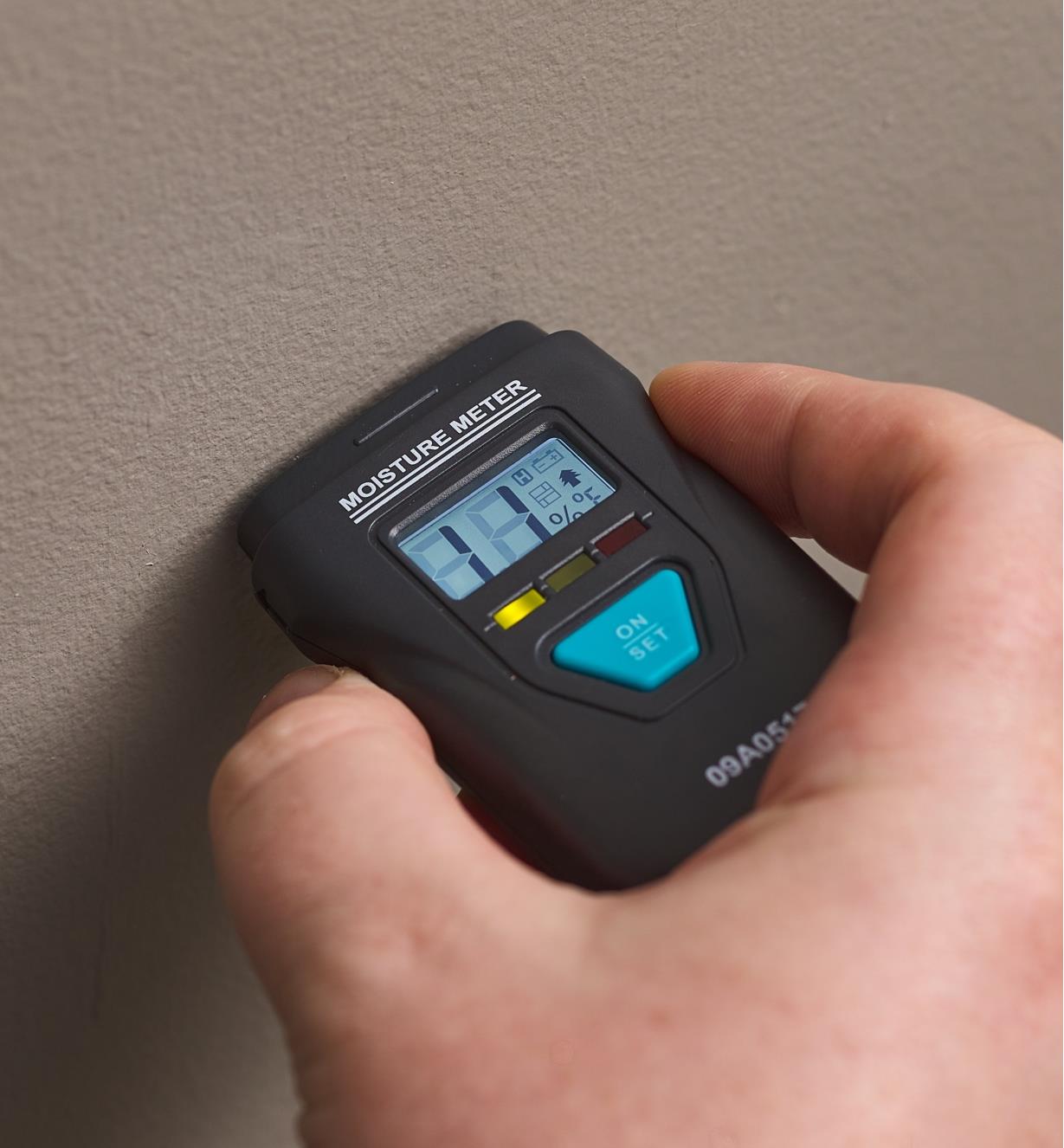How a Moisture Meter Can Improve Your Building And Construction Jobs and Stop Damage
How a Moisture Meter Can Improve Your Building And Construction Jobs and Stop Damage
Blog Article
Comprehending the Importance of a Dampness Meter in Protecting Against Mold and Water Damages in Your Home
In the world of home upkeep, the presence of wetness can frequently be a quiet yet formidable opponent, qualified of creating prevalent mold and mildew growth and insidious water damage if left unchecked. Understanding the relevance of a moisture meter in this fight is not just a choice yet a tactical necessity.

Significance of Wetness Detection
Effective dampness discovery approaches are essential for guarding properties and preventing potential mold and mildew development and water damage. Dampness can permeate right into different building materials, resulting in structural problems and carcinogen - Moisture Meter. By using a moisture meter, homeowner can proactively determine areas prone to excess dampness, enabling for timely treatment and reduction methods
Dampness meters give precise readings of dampness levels in different products such as timber, drywall, and concrete. This data assists in determining areas of issue, also in hard-to-reach or concealed locations. Early detection of dampness build-up enables prompt repair services or modifications to avoid further damage.

How Wetness Meters Work
Wetness meters play an essential role in the proactive identification of excess dampness, helping in the prevention of possible mold and mildew growth and water damages by giving precise analyses of moisture degrees in different structure materials. These gadgets work based on various principles, depending on their type. Pin-type wetness meters, as an example, have 2 pins that permeate the material to gauge the electrical resistance in between them. When wetness exists, it boosts the material's conductivity, resulting in a reduced resistance reading. Pinless wetness meters, on the other hand, use electromagnetic sensors to scan the material without triggering damages. These sensors give off electromagnetic signals that pass through the product and determine the dielectric buildings, suggesting dampness material. Some progressed moisture meters incorporate both pin and pinless technologies for comprehensive wetness detection. Understanding just how moisture meters feature is vital for exact and prompt wetness level analyses, enabling efficient preventive actions versus mold and mildew and water damages.
Finding Early Indication
Upon preliminary assessment of a residential or commercial property, identifying subtle indicators of excess dampness ends up being vital in the early detection of possible mold development and water damages. Some common early warning indications consist of mildewy odors, water discolorations on walls or ceilings, peeling off paint or wallpaper, and distorted or blemished surface areas. Musty smells frequently show the existence of mold or mildew, even if no visible signs are evident. Water stains can signal leaks or seepage, while peeling paint or wallpaper might be an outcome of wetness jeopardizing the attachment of these materials to the surface area. Distorted or tarnished surfaces, such as buckling floorboards or tarnished drywall, are clear indications of water damage. Moisture Meter. Additionally, a boost in allergy symptoms or respiratory system issues amongst occupants may suggest the visibility of mold and mildew because of excess moisture. By immediately recognizing and addressing these early warning indications, homeowners can minimize the threat of extensive mold and mildew development and water damages in their residential or commercial properties.


Stopping Mold And Mildew Development
Acknowledging early warning indications of excess wetness within a residential or commercial property not just allows prompt discovery of potential mold development and water damage yet additionally serves as an aggressive action in avoiding the spreading of mold and mildew. To successfully protect against mold and mildew growth, it is critical to address any kind of sources of wetness immediately.
In enhancement to resolving moisture resources, keeping interior moisture degrees listed below 60% can substantially hinder mold growth. Proper ventilation, sufficient insulation, and utilizing a/c unit or followers can aid regulate indoor moisture degrees. Monitoring moisture levels in areas prone to dampness, such as basements and crawl rooms, making view use of a moisture meter can also help in very early detection of raised dampness degrees and prospective mold and mildew development. By taking proactive measures to protect against excess wetness and mold growth, house owners can protect their residential or commercial property and interior air quality.
Benefits of Routine Monitoring
Regular surveillance of dampness levels in a residential or commercial property can play a critical role in preserving a healthy and balanced indoor setting and avoiding possible mold and water damages. By on a regular basis examining wetness degrees, property owners can find any type of concerns without delay and take necessary activities to stop mold development and water damages. One of the key advantages of normal tracking is early detection. By recognizing and attending to high dampness degrees beforehand, property owners can step in before mold has the possibility to create and spread. This positive method can conserve both time and money in the future by avoiding comprehensive mold and mildew remediation and repair service costs (Moisture Meter). Find Out More
Furthermore, regular tracking enables house owners to track patterns and fads in dampness degrees with time. By establishing a standard and surveillance changes, individuals can identify any type of areas of concern or possible vulnerabilities in the home's framework. This data-driven approach enables targeted interventions and maintenance initiatives to address underlying problems before they rise right into even more considerable problems. Ultimately, the regular surveillance of dampness degrees equips property owners to safeguard their building, safeguard their health, and preserve the integrity of their interior setting.
Final Thought
In conclusion, the usage of a moisture meter is crucial in avoiding mold and mildew and water damage in homes. By spotting early caution indications of moisture, homeowners can take aggressive actions to avoid mold growth and pricey fixings.
By using a dampness meter, home proprietors can proactively identify locations susceptible to Find Out More excess moisture, permitting for prompt treatment and reduction approaches.
Moisture meters give precise analyses of moisture degrees in various products such as concrete, drywall, and timber.Moisture meters play a crucial role in the aggressive recognition of excess wetness, aiding in the avoidance of potential mold development and water damage by giving precise analyses of dampness levels in different structure products. Comprehending exactly how moisture meters function is important for prompt and accurate dampness level evaluations, making it possible for efficient preventive actions versus mold and water damages.
Keeping track of wetness degrees in locations susceptible to wetness, such as cellars and creep spaces, making use of a dampness meter can additionally aid in very early detection of elevated wetness levels and prospective mold and mildew growth.
Report this page